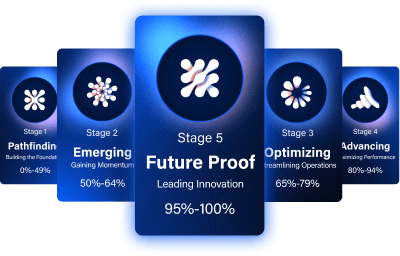It’s likely that you’re working too hard for some of your clients. You probably respond to calls or requests as quickly as possible and try not to keep clients waiting for anything. Here’s a surprise: you don’t have to do that—and your firm will probably be better off if you don’t. Try setting up tiered support instead.
Firms that successfully implement tiered support models can actually make more money while doing less work. That’s good news for firm owners, employees and, yes, even for clients. The key is to develop service-level agreements and let clients choose how urgent they want your communication with them to be.
Three levels of tiered support
The concept is relatively simple and easy to implement. Your firm develops three tiers of client service. Start from the top down:
- Tier 3, the highest tier, involves your firm being ultra-responsive. You call a client back or answer a question within, say, 30 minutes or an hour after receiving a request. You spend more time with these clients than others. They’re paying for elite service.
- Tier 2 client response times would be, for example, 24-48 hours. You and the client have an understanding that outside of an extremely rare emergency, that’s the commitment you’re making. With these clients, there are fewer live meetings, be they in person or via video call. There is less general urgency in your communication.
- Tier 1 clients are the ones that need the least attention. Almost all your communication with them should happen in writing via cloud portal; in-person or video meetings should be fairly rare. These clients can wait perhaps 4-5 business days, maybe even a week, for you to respond to them after they reach out to you. Many of these clients will only use your basic tax services, and they’ll likely be individuals rather than business owners.
Client self-selection and tiered support
Right now, you’re probably doing too much for many of your clients, or at least responding to them more rapidly than you need to. A client that uses your basic service during tax season is unlikely to need urgent responses to much of anything, and you’re wasting time and resources if you’re scrambling to treat tier 1 clients like tier 3 clients.
So, how do you know which level to assign to new and existing clients? Let them choose! Explain your tiered support system to current and new clients, and reassure those who want extra attention that they can still get it.
You’ll likely find that some of the clients you’ve been treating as tier 1-level clients will pay for tier 3-level attention. That might sound stressful since you’ll have to commit to responding to them quickly. But consider this: some of those clients who choose tier 3 service might never actually need or use it. They might not contact you more than a few times a year during tax season. You’re earning more money for the same amount of work.
Shifting firm resources with tiered support
On the flip side, some clients you’ve been serving at a tier 3 level might be happier and better served just paying for tier 1. You can shift your resources from those clients without losing their business. You’ll be able to do less work for this type of client—who is one that isn’t particularly profitable for you, anyway.
The key is to find out from your clients which level of service they prefer. How can you do that? Just ask them, whether in person or with a quick survey.
There are, of course, potential challenges with tiered support. You might find a lot of clients choosing tier 3 service and actually using it. Some training for staff might be necessary, as well as some shifting of resources. But the most likely scenario is that the package tiers will balance out in your favor.
Benefits of a tiered support system
When setting up pricing and packaging, don’t confuse service offerings with response time or level of service. A client can choose tier 3 and only use your most basic tax services. Another client who takes advantage of a broad range of services—financial consulting, retirement planning, succession strategies—might be satisfied with tier 1 and slower response times.
The key is to bundle levels of tiered support and then stick to them. That goes for both rapid response times for tier 3 clients and letting lower-tier clients wait to hear back from you. When you do, you can transform your firm.
One Rightworks Academy member, a $7.5 million firm, implemented tiered support and increased revenue by $750,000 the first year. That’s a 10% jump in revenue—and the firm’s staff didn’t have to do any extra work. In fact, employees worked less.
Consider this: A $2 million firm increases revenue by 10% the way the Academy member firm did. That’s $200,000 in extra revenue. Say the firm’s average price per tax return is $600. Divide $200,000 in extra revenue by $600 per return, and the firm can do 333 fewer tax returns than usual and not lose any revenue. The firm effectively makes the same amount of money while doing a lot less work, and generates more revenue without having to do more work.
Most firms don’t think about bundling and packaging service levels, but they should. Big companies spend a lot of time developing service packages for a reason. Accounting firms of almost any size can do the same—and make more money while helping employees achieve work-life balance and improving the firm’s culture.
Are you ready to transform your firm? Get started today.

